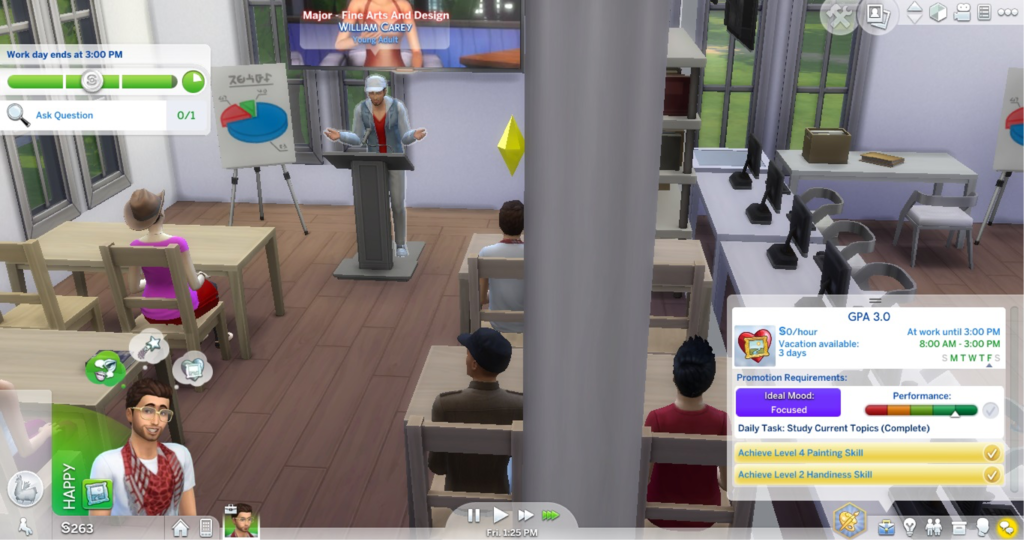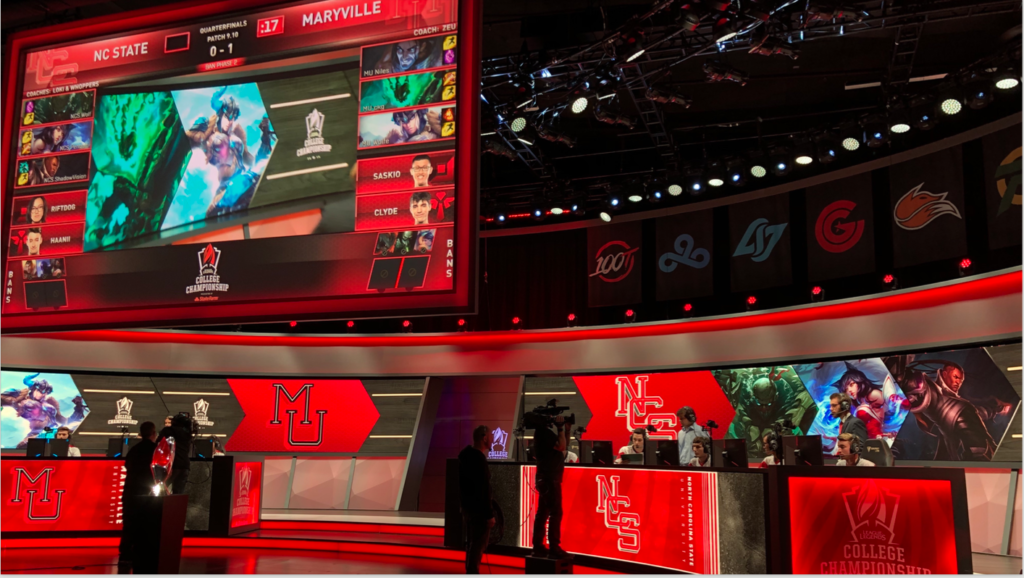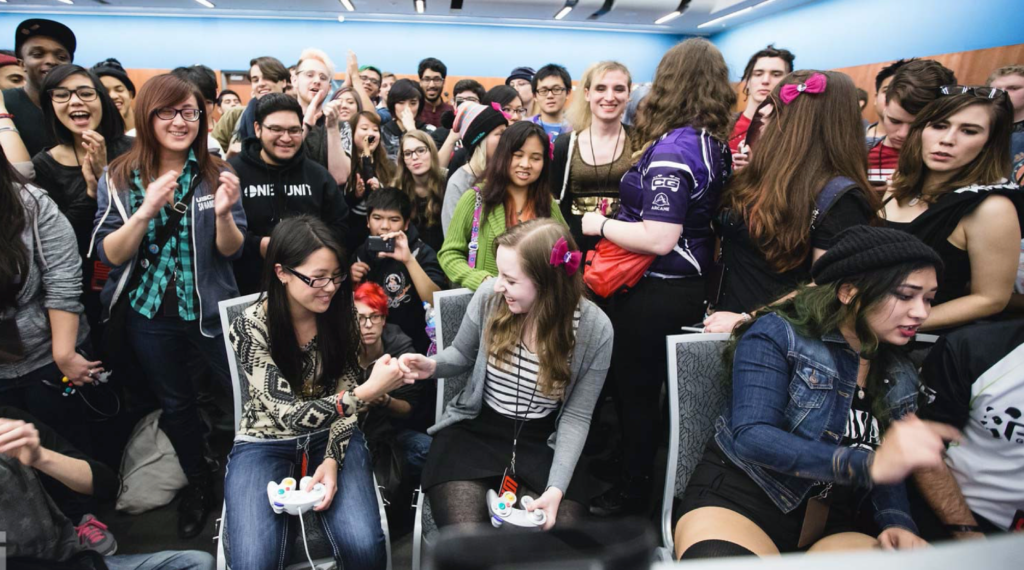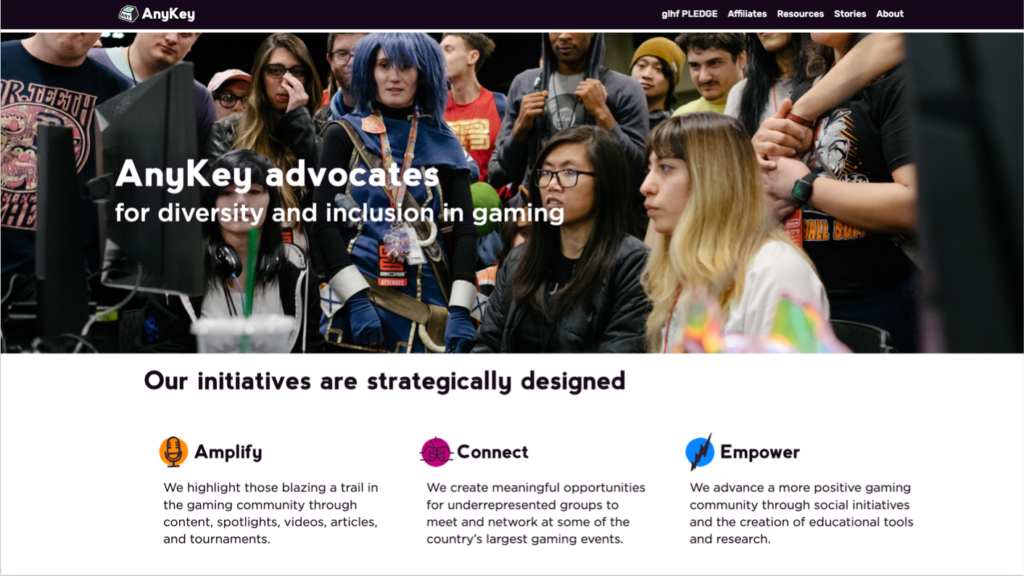The following is from a short talk I presented for the Entertainment Design Symposium at Shanghai Tech in October 2020. It was part of a panel focused on game education and I was asked to address the issue of esports in academic programs.
I’m a professor in the department of Comparative Media Studies at MIT which is where, perhaps surprisingly to some, the games courses on campus are largely taught. Our courses focus on game design and the social study of gaming and our students tend to be mostly people who are majoring in computer science with a smattering of people from other majors, including our own. I’ve been fortunate to see university game programs spring up and grow over the last couple of decades in both the U.S. and Europe. I’ve had the opportunity to direct graduate and undergraduate programs and have seen how the inclusion of games has shifted from being a module embedded in a class on media or technology (as with my own earliest teaching on the subject) to a full-fledged semester, or entire degree.
We are now at a new pivotal point in our thinking about how to weave gaming into university education and today I’ll make a few remarks on this from my perspective as a sociologist whose work has focused on the socio-cultural side of gaming with an eye toward critical studies and has taught within that framework for many years.
Games education in the U.S. and Europe has gone through several significant waves that brought with them heightened mainstream institutional interest, funding, and program development. One of the earliest ways was in linking up to educational science. Games were seen as a new modality for teaching and many researchers and educators began to explore taking them up in classrooms. An extension of this became an application of what were broadly thought of as game design principles to syllabus and course development. At its most extreme, it became the inclusion of gamification into education. Underpinning much of this movement was a belief in the inherent nature of games to remake education, that somehow by tapping into the ludic, schools might suddenly become more compelling to students and what was rote could be transformed into engaged learning. Many study programs, conferences, and journals were spun off from this first move to bring games into the university.
A second major wave was in the launch of game design programs, both as free-standing degree granting initiatives or embedded in more traditional subjects. This move was particularly interesting as it served a dual purpose: it hoped to leverage student’s passion for games and to formalize game design as something that could be taught, much like many other creative or technical arts. A companion set of programs were the creation of game technology study lines that honed in on linking computer science to gaming. Many programs sprung up as a result of this wave, including one of the earliest that I was involved with at the IT University of Copenhagen. Taken together, hundreds of students have now embarked on courses of study that centered games in their education – whether as aspiring designers or game technologists. Deeply woven into these were hoped for professional trajectories into the game industry.
We now face another moment where an aspect of gaming is being chased to bring interest and energy to university educations – esports and live streaming. Increasingly programs are being set up to create a new cohort of people who can work in esports. Similarly, the vibrancy of live streaming and online video production around games are generating modules to train students to produce new forms of content.
As with earlier moments, much of this growth is trying to leverage the cultural hype around a phenomenon. But if we aren’t careful we are doomed to create programs that, like previous waves, make fundamental errors [see Christo Sims excellent ethnography Disruptive Fixation (Princeton, 2017) for a helpful intervention on this line of thinking]. Errors that imagine games – or worse yet, gamification – can simply be dumped into classrooms and change them without fully taking on the structure of our educational systems. Or the creation of game design programs that become pipelines for precarious labor in exploitative media industries that grind people down. Or perhaps worse yet, offer students the promise of stable creative professional lives amidst a commercial system that offers no such footholds. Far too often our attempts to bring games into the university have been done to harness young people’s enthusiasm and fill more university seats, with little regard for core critical structures and institutions that we in the academy should be committed to challenging.
We have an opportunity now as a new wave of games educations are launched to address some fundamental values and orientations as we move forward. I was struck by the language the organizers of this conference used when they approached me for the event. They wrote of the potential for gaming to be “humane, innovative, and forward-looking.” I love this framing and think it is so central to both the potential of play but also what we as educators should be aspiring to. In that spirit, let me say a few words about three angles worth considering: thinking beyond the system as it is now, the fact that games are culture, and that equitable participation must anchor our educational aspirations.
Beyond “what is”
Moving beyond “what is” means not thinking of our educational programs as serving industry as its currently formulated. It means not simply taking an inventory of existing job titles or roles and replicating them in our curriculum. It means not accepting as an unalterable truth a commercial model or a dominating legal framework. It means understanding the potential of play and games to be powerful productive spaces that don’t just reflect society, but can change it.
Our programs must foster new models. We must do more than re-produce how things are, or attenuating ourselves and our students, to the existing industry.
Education should always be, at least in part, about new discovery, new knowledge production, and expansive forms of creative experimentation and inquiry. In much the same way we understand the work of science as not simply about replication (as important as those experiments are) but reaching beyond what we already know, we should always be striving for the next iteration. This means fostering educational spaces, fostering gaming spaces, that are hopeful imaginaries.
This doesn’t mean we shouldn’t teach a set of fundamentals. We should. But those fundamentals shouldn’t be tools to reproduce what we currently have, they must instead be critical modes of thinking, structures of exploration and inquiry, risk taking, and room for imagined new possibilities.
Because frankly, what we currently have isn’t always great. Our games (including their marketing and how communities are built and fostered) are often wedded to stereotypes, regressive models, and a limited imagination of games as cultural and political objects. Games, and play, are powerful and our educational programs should aspire to open up the possibilities for that truth and exploration.
This will be done in part by keeping a critical engagement with media at the center of our thinking. Far too often game programs are built on simply creating a new pipeline to industry and funneling students into existing companies and roles. While the reproduction of the labor force can certainly be a component to education, it is far too short-sighted a goal for the academy. We need to be much more ambitious when we create programs for students. We need to be offering pedagogical moments that allow them to think beyond existing models, indeed that allow them to critique and offer alternatives. We need to be providing structures that go beyond commercial models, that don’t center profit or over-extended and exploitative labor, that see games not just as commodities for a media marketplace but a site of culture that can live in a myriad of ways, from civic engagement to creative expression.
Games are culture
We must also understand that the socio-cultural aspect to gaming cannot be set off side of technical or artistic practice. Games are, by their nature as playable objects, firmly seated in the realm of culture. Culture is always about the reworking of our material and symbolic world. It is about meaning-making. It is about materiality and practice. Play – and game creation – is an act of cultural production. While games are technologies, they are socio-technical objects that are created and exist in collaboration and creative iteration with humans, with players. As such, understanding them within a transformative paradigm is key. They exceed their formal bounds and only by understanding them as such do we come to a full recognition of the power and potential of play.
A robust games education understands that gaming cannot be set into narrow technical or artistic fields, that it sits across disciplines and domains and that even in the case of design, games are always co-created by players themselves. Game design, and game technology, at its heart must be human centered… and not just the humans who are the formal creators. We need to come to build, sustain, and value social innovation as much as we do technical innovation.
This means games education cannot be seen as just a STEM endeavor. Nor, with all due respect to those who would want to make sure we get “arts” in there, a STEAM endeavor. Gaming is a human endeavor and as such, disciplines like sociology, anthropology, communication, media studies and even history must be central to our programs.
Both conceptually and practically, we must approach games education as one in which authorship – be it creative or technical – is not seen as residing only in the hands of formal actors but instead as distributed along a chain, from designers and developers to players themselves. The stakes for what games are matter. They are important cultural artifacts, even as they are objects of leisure or play.
Equitable participation
Finally, we must recognize that gaming has become a mainstream activity that crosses so many demographic categories. It is not constrained to the young, to men, to any ethnic or racial majority. We cannot simplistically bucket people by genre and gender anymore. Gaming is a part of our culture writ large, and gaming tastes have expanded and honed. This empirical reality must be reckoned with when we are setting up games education programs.
We must build and sustain a programmatic commitment to full participation amongst all students, not just young men. For far too long we’ve been content to create game education programs that are deeply unrepresentative of both society and the broader playerbase. As games have become just yet another mainstream leisure activity and indeed a growing component of culture writ large, this gap has become even more visible. We cannot be content with inequitable participation where our educational programs are filled only, or even mostly, with young men. We cannot be content with a kind of “separate but equal” divide where men fill the tech spots and women sit on the artistic side, or university esports teams and clubs that don’t have a single woman competing (while often doing a lion’s share of “backstage” labor). What games are, and who can participate in their production and play, matters.
Several years ago I co-founded an organization called AnyKey which is dedicated to helping build inclusive gaming spaces. We’ve done a variety of initiatives over the years, from supporting professional tournaments to online pledges. We have produced a number of whitepapers and recommendations as well, most recently on esports in collegiate spaces.I welcome and encourage you to take a look at some of our resources if you are interested in this topic.
In closing, I thought I’d show you a very short video we made several years ago featuring Angie Klingsieck, an amazing woman who co-founded and ran one of the largest collegiate clubs in the U.S. (She’s since graduated and gone on to work for the NBA2k League amongst other things.)
I love this video of Angie and her club because it gives us a glimpse into a better future for games on our campuses. It offers a picture of what it looks like to not accept things as given but to try something new and build something not quite seen before. It speaks to the expansive potential of games as both play and a space around which we connect with each other in meaningful ways. And it shows how we might strive to bring everyone in.
Ultimately my call is for thinking about game educations as an ambitious exercise that risks imagining a future where the joy of play brings students – and us as faculty and staff – together. Where the power of games as culture, one that we all participate in, and have stakes in, matters. Where we understand it might not just be about reflecting what is, but producing, the worlds we hope for. And where we might start thinking critically, and expansively, about how our educational programs can help build that future.
Thanks much!




